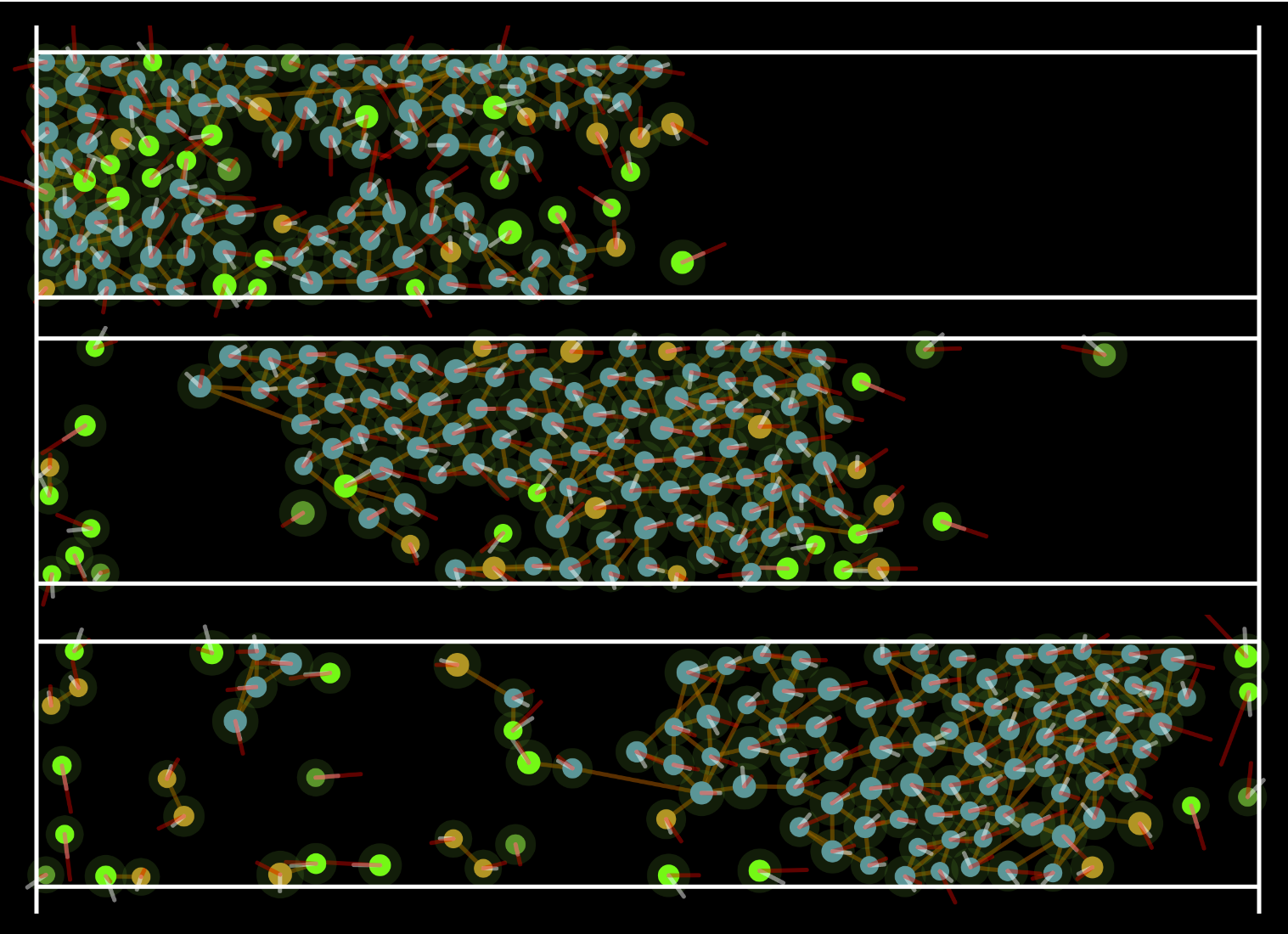Short project description:
Cell migration model for plithotaxis
This project is a collaboration with Eric Theveneau, Marina A. Ferreria, Diane Peurichard, Pierre Degond and Sara Merino-Aceituno.
The cell migration of mesenchymal cells after they leave the epithelium is very specific and it is not clear which cell migration model is most appropriate. While there are many possible theoretical models and rules for cell migration, the experimental data do not clearly indicate which of these rules are the correct ones.
At the moment we are building a model which includes effects such as plithotaxis, contact inhibition of locomotion and chemotaxis.
The following simulation is absolutely preliminary. It is a simplified version which I prepared for a public science event ("Lange Nacht der Forschung" in Vienna, 2022). The goal of the event was to explore under which conditions cells organise themself.
Some experiments one can perform with the simulation:
- Do cells still migrate collectively in the absence of cell-cell repulsion?
- How important is confinement?
- You can interactively move cells with the mouse. Can you change the direction of migration that way?
Plithotaxis
Confinement
Cell-cell repulsion
Adhesion strength
Heterogeneity
Chemotaxis
Number of cells
Description of the simulation
The green spheres represent the cells, and the transparent spheres around them indicate the repulsive domain. In addition, cells can form temporary adhesive bonds which are displayed as orange lines.
Each cell is The red line displays the forces which are acting on the cell. The black line shows the polarity, cells will always try to run in direction of their polarity.
Parameters:
- Plithotaxis: Cells react to the forces by changing their polarity. If the polarity and the forces are not aligned, then the cells will sooner pick a new polarity which tends to be more aligned with the forces.
- Confinement: Controls the upper and lower walls, hence the available space.
- Cell-cell repulsion: Strength of repulsion between cells.
- Adhesion strength: Determines how strongly the adhesive bond pulls the cells together.
- Heterogeneity: Determines how much the size of cells varies. [1]
- Chemotaxis: Adds an attractive chemical to the right side of the domain; cells will try to turn towards the chemoattractant.
Features of the model
Even this simplified model can reproduce certain realistic aspects, such as:
- Collective cell migration of a cluster occurs only under specific conditions, e.g. if the following conditions are satisfied:
- confinement ('limited space forces the cells to collaborate')
- cell-cell adhesion ('cells stick together')
- cell-cell repulsion ('cells push each other')
- cell polarity changes according to the forces the cell experiences
- Cells do not perfectly align during migration, it is rather a messy and chaotic situation (typical for real biology).
- Cells can turn around if they run out of space in one direction.
An example of this behaviour can be seen in the image below:

Numerical method
As in my previous project, we used again position-based dynmaics.
Of course, this is only one out of many ways in which cells can vary! ↩︎